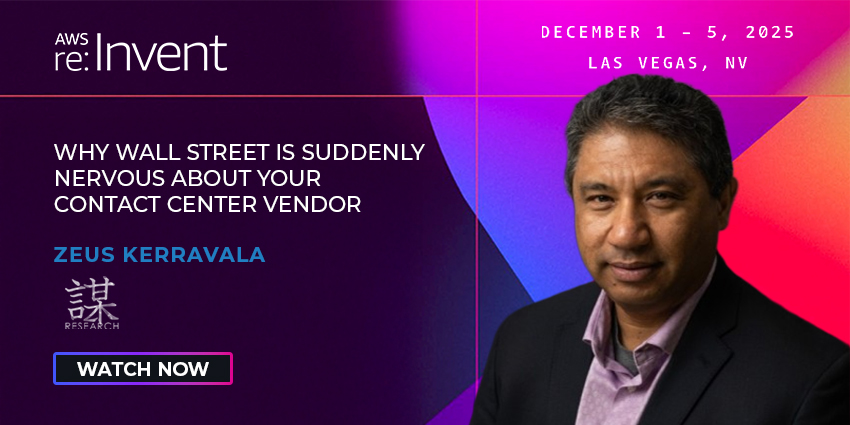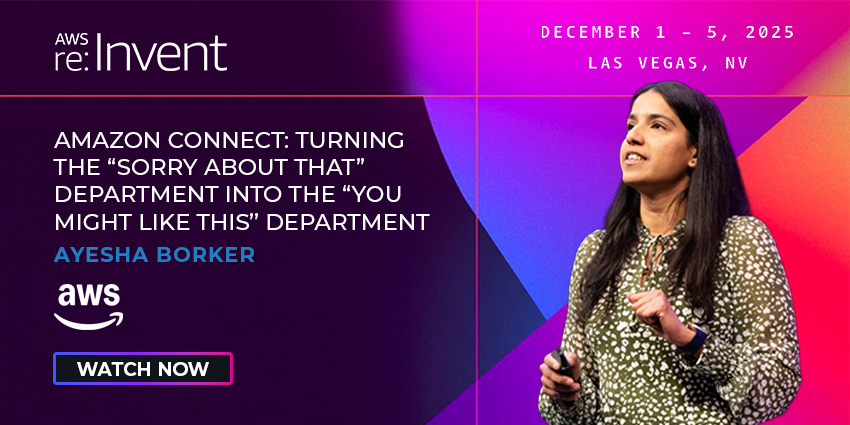Decision makers across all corners of the industry are being peppered with the latest technologies and features that will “revolutionize their contact center.”
While technologies like AI are playing a tremendous role in changing the way contact centers operate, there are some widespread pitfalls that decision makers are falling into that could hamper AI rollout in the CCaaS space.
This has real-world implications, too, with recent research showing that 80 percent of tech specialists can end up regretting their choice of CCaaS vendor.
Drawing on insights from Miratech, here are five common pitfalls to look out for – and what you can do to avoid them.
1. Overlooking Integration Needs
You’d be forgiven for assuming the first pitfall is picking the wrong features from a CCaaS vendor.
Instead, the biggest mistake is not working out how your CCaaS platform plugs into your existing ecosystem.
Skipping a deep dive on integrations can lead to broken data flows between CRMs, workforce management systems, and analytics, increasing downtime and costly workarounds.
Speaking on this, Mike Burrows, Director of CX Solutions at Miratech, told CX Today, “The contact center is an ecosystem. There’s more to it than just the CCaaS solution.”
“There are a lot of assumptions that companies are using one solution for everything. It’s just not the case. So, you’ve got to understand how to integrate with those homegrown applications.”
2. Skimping on Scalability
Your CCaaS choice should do more than handle today’s call volume—it needs to grow (and shrink) automatically as demand fluctuates.
Buying just enough capacity for Q1 forecasts means:
- Manual provisioning when traffic spikes
- Ongoing cost shocks for emergency add-ons
- A patchwork of point solutions instead of a unified, elastic platform
On this, Burrows explained, “Miratech takes a different approach to evaluating vendors for clients. For example, when building a house, you start with the foundation. You look at what the foundation is.
“So your foundation is going to tell you how scalable or how quickly it can make adaptations in the future for you. So you’ve got to look at the architecture.”
The core advice? Ask vendors how their solution scales up and down in a range of different scenarios.
“Some vendors do it automatically without you even seeing it happen. Others have people monitoring it and scaling up for you. And a lot of times, when you scale up, you’re stuck paying for what you scaled up to. You can never scale down.”
3. Lack of Vendor Transparency
Is your prospective provider open about roadmaps, SLAs, and total cost of ownership? Vendors who gloss over these issues can leave you scrambling when you need new capabilities or 24/7 support.
“You have to be careful because you may get a vendor that wants to sell a solution to you and then, as soon as you buy it, they hand you off to a partner or somebody else to do the implementation.”
So you have to understand what that process is to understand the full transparency of the solution.
Vendor app stores are a big giveaway here too.
“There’s a reason why they have app stores, because they can’t meet everyone’s needs. So you have your base license costs and then you have to figure out what you’re going to add on from the app stores to meet your needs,” Burrows said.
4. Ignoring Customization Needs
A one-size-fits-all UI, reporting package, or scripting language might work for a cookie-cutter contact center, but what about your own unique processes?
Overlooking customization can cause lengthy developer cycles for even minor tweaks.
Additionally, it can leave agents toggling between multiple tools and hamper wider CX innovation throughout the company. Getting this right is therefore vital.
Burrows expanded on this, “vendors all treat this [customization] differently, so understanding how that vendor works is essential. Can that meet your long-term goals.”
5. Focusing Solely on Cost
It’s tempting to anchor on sticker price, but a low quote often back-loads expenses into integration, training, customization, and support further down the line. When you shop on cost alone, you risk:
- Surprise bills for “optional” modules
- Recurring fees for every minor configuration change
- Higher churn as agents and IT teams wrestle with hidden complexity
“There’s a reason why vendors have app stores because they can’t meet everyone’s needs. You’ll have your base license costs and then you have to figure out what you’re going to add from the app stores to meet your needs.”
What Happens If You’re Already on This Journey?
If you’ve signed a CCaaS agreement and are mid-implementation, don’t panic – you can still steer back on course:
- Revalidate Your Integration Blueprint
Host a cross-functional workshop to document every system handshake. Identify quick wins (e.g., API re-use) and red flags (e.g., proprietary middleware). - Stress-Test Scalability
Run controlled volume spikes or simulate peak-season traffic to reveal auto-scaling gaps before they become crises. - Push for Transparency
Schedule a quarterly business review with your vendor to revisit SLAs, roadmap progress, and emerging fees. - Unlock Customization
Empower a small “automation squad” to pilot no-code tools and surface overlooked use cases. - Re-benchmark Total Cost
Compile actual spend across modules, services, and internal labor. Use this real-world data to negotiate better terms or plan migration strategies.
Even if you’re in deep, these steps can help you course-correct, optimize what you’ve built, and pave the way for a CCaaS solution that truly adapts and scales with your business.
To hear more on these insights, you can catch up with the latest CX Today video here.







